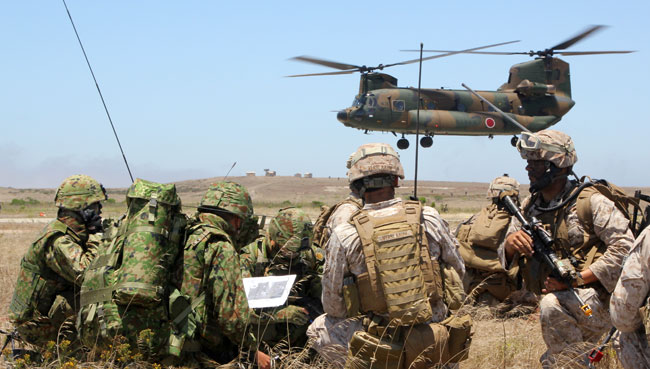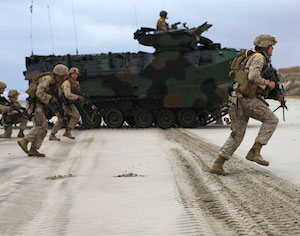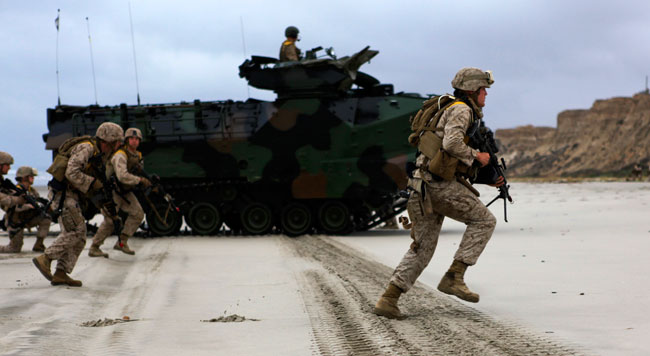
Japan plans to invest ¥24.67 trillion yen (US$24 billion) over the next five years in a military buildup plan bolstering Japan’s sovereignty in the region, particularly supporting its territorial claims in the East China Sea, where Tokyo and Beijing are at odds over the Senkakus island chain (Diaoyu Islands as the Chinese call them). The plan is expected to be approved tomorrow (Dec. 17, 2014) in a Cabinet meeting, along with the National Defense Program Guidelines.
The acquisition of Global Hawk UAVs is part of the five-year ‘medium term military buildup’ plan adopted by the Cabinet meeting last week.
The recent escalation by China’s declaration of an Air Defense Identification Zone (ADIZ) over the East China Sea has triggered Japanese concern to increase its air defense capabilities over its own ADIZ, that overlaps the Chinese area. Tokyo is now renewing plans to buy three RQ-4 Global Hawk High Altitude, Long Endurance unmanned surveillance drones to bolster intelligence and surveillance capability over the region. Japan plans to station these Global Hawks at the Naha base in the Okinawa region, along with airborne early warning aircraft currently monitoring the area.
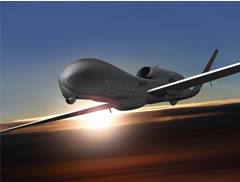
Deployment of Global hawk over the East China Sea could face significant risk, given the Chinese countermeasures against the continuous surveillance flights performed by US Air Force RQ-4s deployed from the US base in Guam. According to the Washington Times, quoting the Chinese Aerospace Electronic Warfare technical bulletin, among the countermeasures available to the Chinese authorities is electronic jamming disrupting the aircraft datalink and control channels, spoofing GPS signals used to augment on-board navigation. An offensive strike by air defense or air/air missiles is possible, but not likely under the current situation, but the Chinese could employ a coordinated jamming and cyber attack in an attempt to hijack or crash a Global Hawk, similar to the act claimed to have done by Iran, downing a CIA RQ-170 Sentinel stealth drone.
The acquisition of Global Hawk UAVs is part of the five-year ‘medium term military buildup’ plan adopted by the Cabinet meeting last week. Japan also plans to extend its air defense capability by enhancing range and endurance of Combat Air Patrol (CAP) with additional aerial refueling planes, supporting CAP conducted by current F-15J and F-2 jet fighters. Japan’s Self-Defense Air Force (JSDAF) currently operates four Boeing 767J aerial refueling planes acquired from Boeing. According to the plan Japan is seeking to field a second aerial refueling squadron with three additional aircraft. Further spending already announced will include 28 F-35 Lightning II stealth fighter jets for the Air Self-Defense Force, and four new early-warning aircraft (Japan currently operates four Boeing 767-AEW aircraft).
One of the most significant changes in the Japanese force structure is the transformation of infantry regiments into amphibious forces, for the first time since the WWII
In addition to amphibious and air power, Japan also intends to bolster its naval forces, introducing two new AEGIS destroyers (in addition to the four already deployed), equipped with ballistic missile defense systems, and five new submarines. Three ‘compact’ high-speed destroyers, optimized for shallow sea operations are also included in the plan.
One of the most significant changes in the Japanese force structure is the transformation of infantry regiments into amphibious forces, for the first time since the WWII. Since the government put the Senkaku Islands under state ownership in September 2012, Chinese government’s vessels have repeatedly intruded into Japanese territorial waters around the islands, heightening tensions between the two countries. The Defense Ministry decided it was paramount to establish amphibious troops that will be able to take back islands in the event they are invaded and occupied.
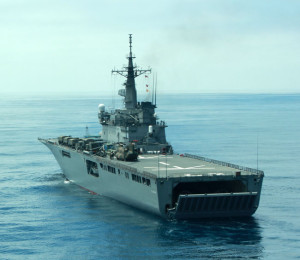
The escalating conflict has accelerated what have been until now quiet plans to develop a specialized unit of marine infantry. Kyle Mizokami Wrote in the US Naval Institute review (USNI). This force, mentored by the U.S. Navy and Marine Corps, is seen by Japan as essential in guarding the Senkakus, as well as other disputed territories. Like the Navy/Marine Corps team, the Japanese force will be a joint group consisting of the Ground, Air, and Maritime Self- Defense Forces, with everything from infantry to air support to the ships that carry them.
At present, Japan has no forces tailored to amphibious operations, since marines are typically considered offensive in nature and Japan has barred itself from having offensive forces. Since 2012, when Japan has eased this self-imposed policy, an amphibious force is considered essential to enable rapid response and reinforcement, in case the Chinese decide to move in to take the disputed islands.
Based at Nagasaki in southern Japan, the Western Army Infantry Regiment (WAIR) has been tasked the amphibious mission. A battalion size force, WAIR is considered only the core of a new marine force, which will be considerably larger Mizokami wrote. The regiment has no vehicles except for Mitsubishi Type 73 light trucks. Japan has asked to buy six AAV-7A1 from the US, to equip one amphibious platoon. The new acquisition plan will increase this number to 52, adding 99 wheeled assault vehicles (8×8 armored infantry carriers), representing mobility assets to carry an entire marine brigade.
The main core supporting Japan’s amphibious assault and rapid response capability are two Hyuga class helicopter carriers, supporting up to 14 helicopters, and three Oosumi Class Landing Ship Tanks (LST), each carrying two Landing Craft Air Cushion (LCAC) vehicles and smaller landing crafts providing ship to shore transportation.
